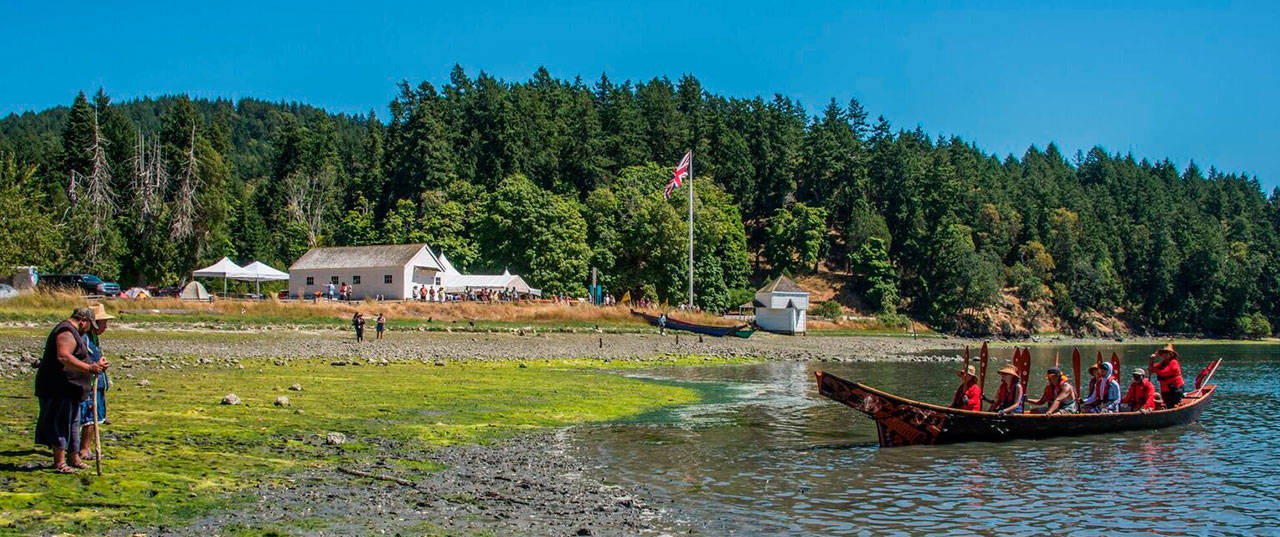Ronald Day, of the Swinomish Indian Tribe, has joined an annual canoe trip to celebrate local Native Americans since the event’s beginning.
“Our elders had a vision for our kids, to bring back a way of life, the way our ancestors traveled,” said Day, on the shores of English Camp on Tuesday, July 25.
Day was one of 260 paddlers who arrived in a wooden, ocean-going canoe on San Juan Island’s shores that afternoon. In the Tribal Canoe Journeys’ 27 years, this was the first stop at a U.S. National Park.
Each year, Pacific Northwest tribes paddle to visit other Native Americans off coasts like Washington and Canada, en route to a central location. They stay overnight at each stop for a reunion.
“We do what our ancestors used to do,” said Eugene Edwards, also of the Swinomish tribe, “we travel, dance, sing songs, and visit one another.”
Edwards and Day’s tribe traveled with four canoes, seating about nine each. It took four days to travel from La Conner, to the Samish in Anacortes, to Lopez’s Odlin Park, to English Camp. They joined community dinners, which were hosted by local sponsors and held at the Lopez and San Juan camps. Each local event brought about 300 participants, according to Friends of the San Juans staff.
Other than their locations, participating tribes are joined by a common dialect, said Day. In Salish, San Juan Island, he said, is Pe’pi’ow’elh.
It was 1989 when Day first joined the celebration in its inaugural event called Paddle to Seattle. At the time, he used a war canoe, which he explained is faster than this trip’s traveling canoes. The one he used on this journey was built by the Makah tribe in 2003.
Hosting stops on the journey is a way islanders can support local tribes, said Elexis Fredy, superintendent of the San Juan Island National Historical Park. Those participating in the journey hail from different areas of origins, like the Swinomish tribe, which is from the islands, as well as the mainland.
“Hosting a journey may seem like a small step, but it’s a really important one to honor tribes,” said Fredy.
Paddlers headed north from San Juan at 5 a.m., Wednesday, July 26 to reach the final destination of Campbell River on Vancouver Island by Aug. 5. Day said up to 10,000 people have attended past stops at events’ final destinations. He expects the whole trip to last 13 days.
Fredy hopes to see him and the other paddlers again, by hosting more journeys at the island’s national park, which has two sites — one at English Camp, and the other at American Camp.
“As stewards of public land, we have a duty to support and restore these traditions,” she said.
This year’s local journeys were sponsored by Friends of the San Juans, San Juan Island National Historical Parks, Bureau of Land Management, San Juan County, San Juan County Parks, Roche Harbor Resort, Blossom Grocery, and Kings Market. For more information on the remaining stops, visit www.tribaljourneys2017.com.



